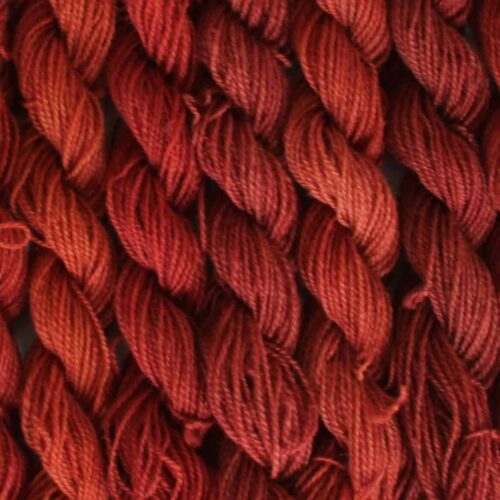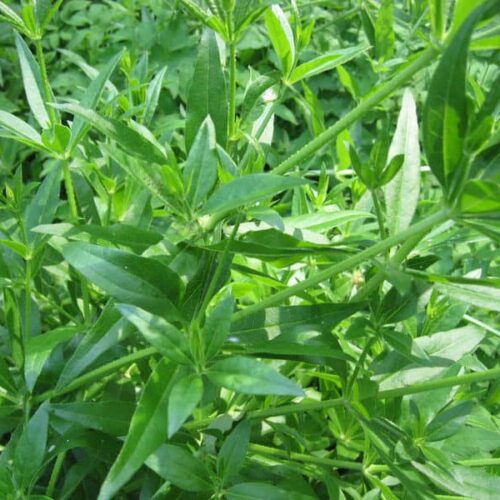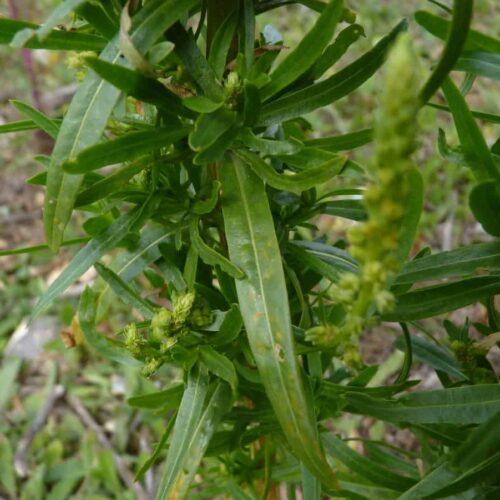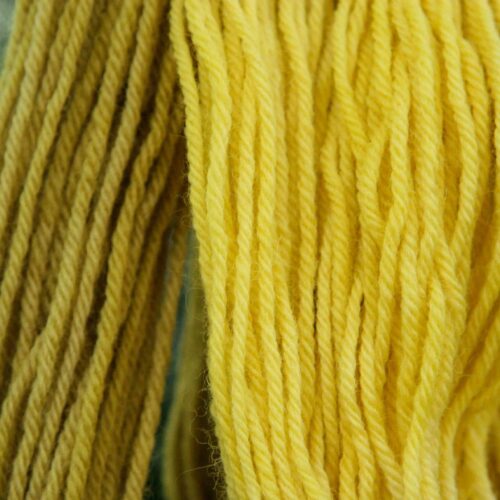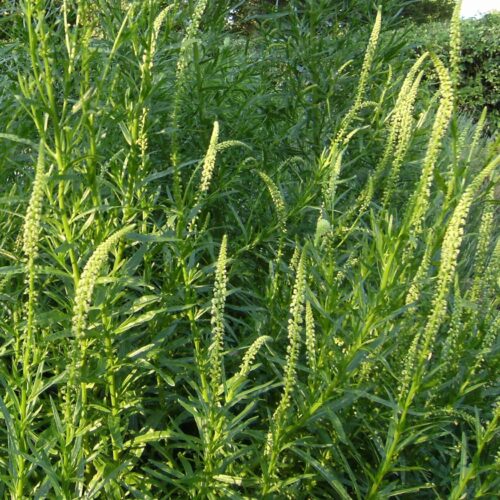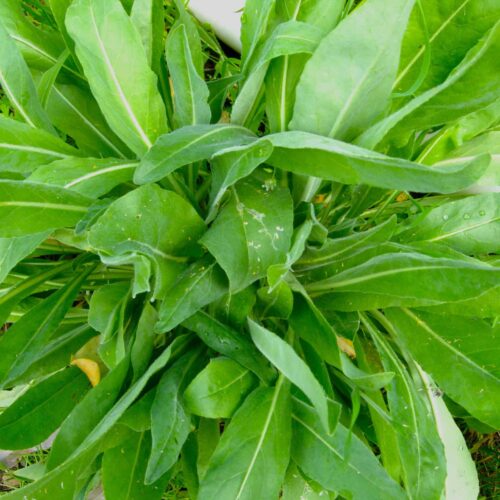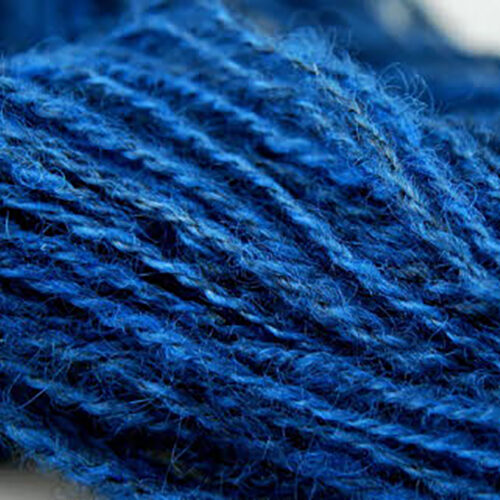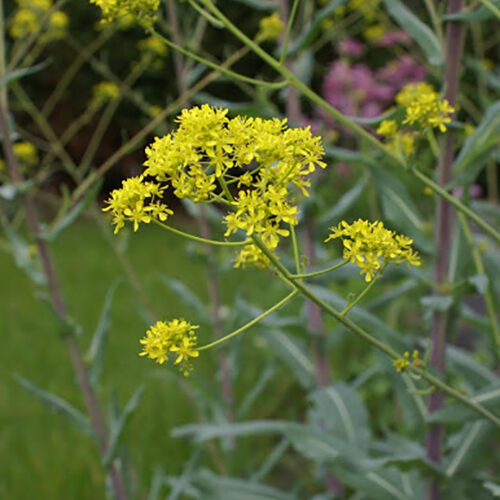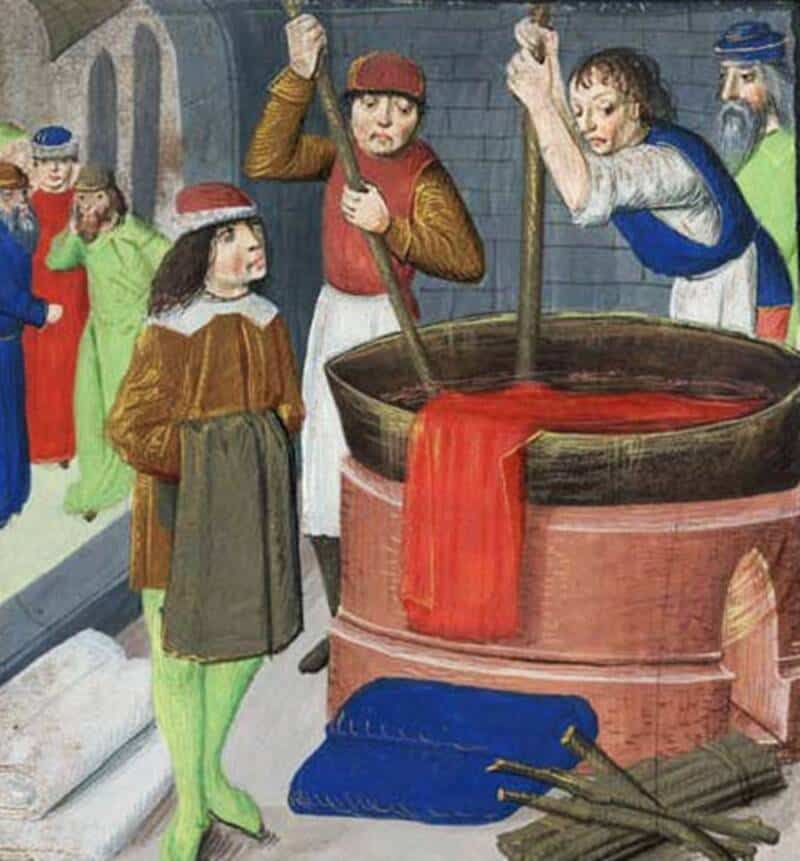The Dyer’s Garden
This garden contains many of the plants used by the medieval dyer whose role was to create the beautiful and richly coloured fabrics worn by people with status and wealth. While poorer people would have worn the blacks, browns, greys and cream of the natural fleece, for those that could afford it, there was no lack of vibrant colours available. The three main dyes of the period were taken from madder (reds), weld (yellow) and woad (blue). These three dyes when used alone or in combination with each other and with other dyestuffs of the time were able to produce a rainbow of colours. Although these plants were all grown commercially for dyeing in the 15th century, they could also have been grown in the castle garden to produce dyes used to colour the garments worn by Lord Scrope and his family.
In medieval times dyeing was done with colour obtained from plants. This is called natural dyeing. The medieval dyeing industry was fairly advanced and had at its disposal not only a host of dyestuffs that could be gathered from the garden but also industrially grown and harvested dyestuffs that were traded across Europe and beyond.


